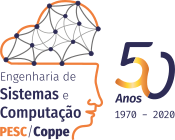Um Sistema de Intervenção Computacional para Rastreio e Monitoramento de Leitura em Uma Proposta de RTI
Authors:
Autores
| Person role | Person | |
|---|---|---|
|
6418 |
2911,200,2249
|
|
|
6419 |
2911,200,2249
|
|
|
6420 |
2911,200,2249
|
Informations:
Pesc publication
Esta tese tem por objetivo apresentar um sistema para monitorar a intervenção de crianças em com transtornos específicos de leitura baseado na abordagem RtI. A arquitetura proposta do DysDTool+L contêm os módulos de RtI (camadas 2 e 3), estratégias de intervenção, severidade (fuzzy e escore z) e configuração. São definidos textos específicos para cada ano escolar dos pacientes (2o ao 8o ano), e experimentos tanto na camada RTI-2 com 70 pacientes, quanto na camada RTI-3 com 21 pacientes. As variáveis usadas nos experimentos são a velocidade de leitura e o desvio e são entradas do sistema fuzzy e do escore z que retorna como saída o grau de severidade que determina o nível de severidade da dislexia de um paciente em intervenção. O grau é medido no início e no final do experimento durante 16 semanas de um semestre letivo. Os experimentos indicam progresso dos pacientes usando a abordagem RtI na maioria dos casos. No entanto, devem ser realizadas novas pesquisas para determinar se o progresso é produto das estratégias de intervenção usadas ou existem outros fatores. As discrepâncias encontradas devem ser analisadas pelo especialista. O DysDTool+L é uma ferramenta de monitoramento que auxiliar o especialista que lida com dislexia.
This thesis aims to present a system to monitor the intervention of children with specific reading disorders based on the RtI approach. The proposed architecture of DysDTool+L contains the RtI modules (layers 2 and 3), intervention strategies, severity (fuzzy and z score) and configuration. Specific texts are defined for each school year of the patients (2nd to 8th year), and experiments in both the RTI-2 layer with 70 patients and the RTI-3 layer with 21 patients. The variables used in the experiments are the reading speed and the deviation and are inputs of the fuzzy system and the z score that returns as output the degree of severity that determines the level of dyslexia severity of an intervention patient. The grade is measured at the beginning and end of the experiment during 16 weeks of a semester. The experiments indicate progress of patients using the RtI approach in most cases. However, further research should be done to determine if progress is product of the intervention strategies used or there are other factors. The discrepancies found should be analyzed by the specialist. The DysDTool+L is a tool for monitoring to help expert to dealing with dyslexia.



